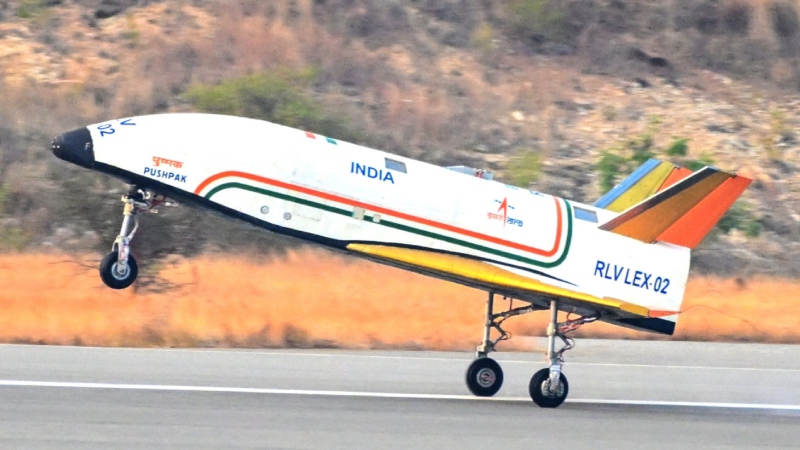
ISRO successfully launched RLV-LEX-02 Pushpak
It employs complexity of a launch vehicle and an aircraft
It is of the size of an SUV and is called “Swadeshi Space Shuttle”
It is yet another feather in the illustrious cap of ISRO as it successfully launched RLV-LEX-02 Pushpak. Even as the country gloats in the success, let’s understand the vehicle’s uniquenesses.
RLV-LEX-02 Experiment:
🇮🇳ISRO nails it again!🎯Pushpak (RLV-TD), the winged vehicle, landed autonomously with precision on the runway after being released from an off-nominal position.
🚁@IAF_MCC pic.twitter.com/IHNoSOUdRx
— ISRO (@isro) March 22, 2024
This is the third test of the vehicle. The first one took place in 2016 at Shriharikota. At that time, it successfully sank in the Bay of Bengal as per plans. In the second test conducted in 2023, it was dropped from the air using a Chinook Helicopter for an autonomous landing. The vehicle is of the size of an SUV and it is called “Swadeshi Space Shuttle.”

ISRO successfully launched RLV-LEX-02 Pushpak
It employs complexity of a launch vehicle and an aircraft
It is of the size of an SUV and is called “Swadeshi Space Shuttle”
It is yet another feather in the illustrious cap of ISRO as it successfully launched RLV-LEX-02 Pushpak. Even as the country gloats in the success, let’s understand the vehicle’s uniquenesses.
RLV-LEX-02 Experiment:
🇮🇳ISRO nails it again!🎯Pushpak (RLV-TD), the winged vehicle, landed autonomously with precision on the runway after being released from an off-nominal position.
🚁@IAF_MCC pic.twitter.com/IHNoSOUdRx
— ISRO (@isro) March 22, 2024
This is the third test of the vehicle. The first one took place in 2016 at Shriharikota. At that time, it successfully sank in the Bay of Bengal as per plans. In the second test conducted in 2023, it was dropped from the air using a Chinook Helicopter for an autonomous landing. The vehicle is of the size of an SUV and it is called “Swadeshi Space Shuttle.”
